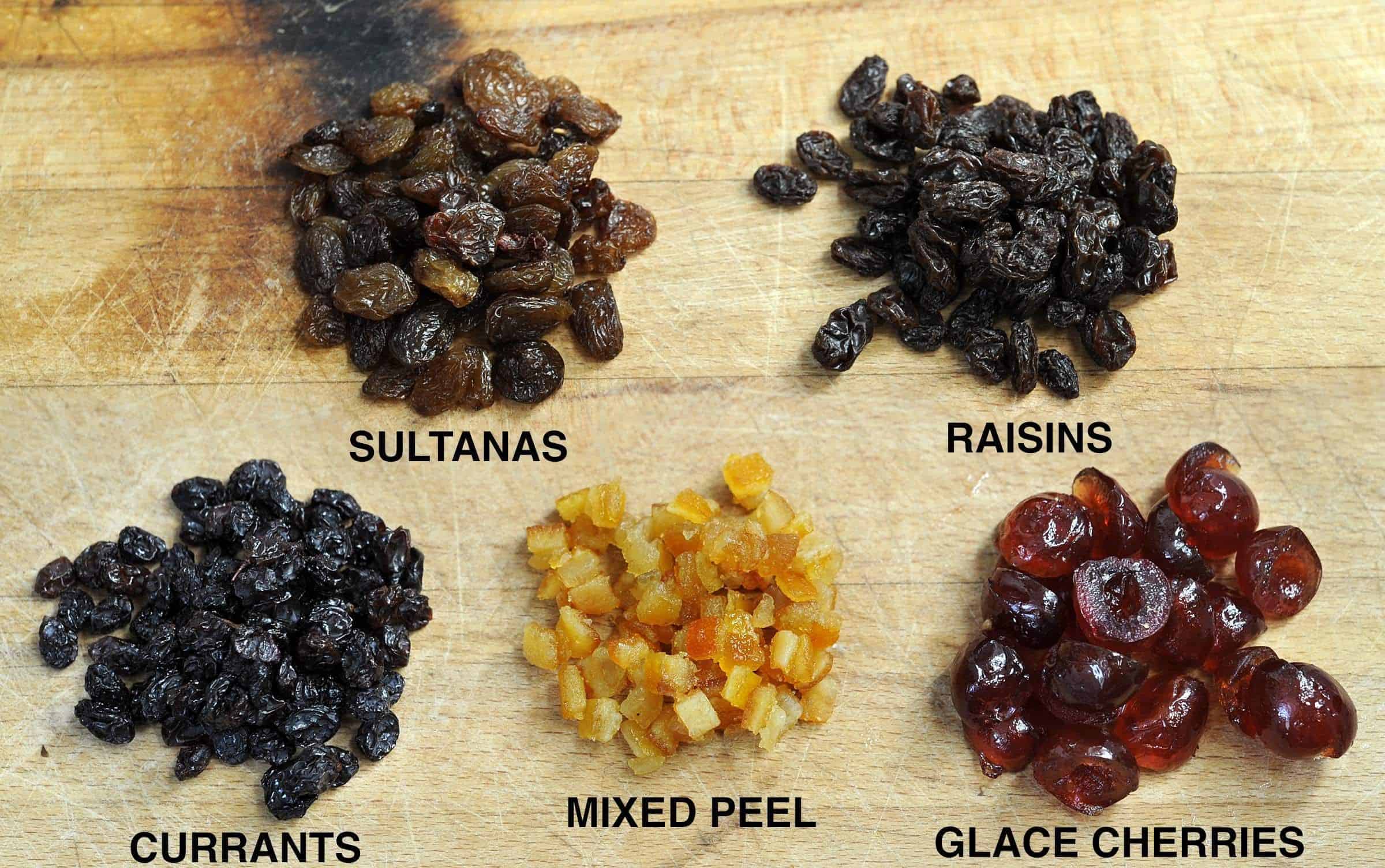You may recall The Great Cinnamon Crunch Toast Saga of 2021. Allegedly, someone found shrimp tails in their breakfast cereal, and it turns out that someone was Topanga’s husband. It didn’t end well! But Milkshake-Ducks aside, lots of foods can get contaminated with stray bits of insects. So what foods have bugs in them? Let’s check for common examples in your pantry.
What Foods Have Bugs in Them?
1. Grains and Flour
You can buy flour from the dry goods store or make some at home with a blender or food processor. And the most common pantry pests in flour include beetles, weevils, and moths. To spot them, spread a thin layer of flour on a clean countertop and let it sit idle for 30 minutes. If the flour is infested, you may see bumps, clumps, bits of brownish or grey dust, or bug parts.
You can find the same bugs in rice, oats, corn, pasta, wheat, and other grains. And you can spot them in a similar way. When you first buy your flour and cereals, freeze them for a week to kill any pests. Then take them out of their original packaging and store them in airtight jars with lids. Glass and plastic containers work well because you can easily spot any pests that sneak in.
2. Crackers and Cookies

Lots of us have cookie jars at home, and there’s always a box of crackers lying somewhere in the kitchen. These snacks are convenient emergency rations and treats, and crumbling them can be a quick way to garnish a dish or use up leftover sauces and dips. These baked goods have decent shelf lives, but they can attract ants, moths, and other pantry bugs that are tough to get rid of.
You can control these pests in the same way as flour bugs. Don’t store them in their original bags or boxes, since they may have pests from the store. Besides, those cardboard boxes can get damp and attract termites. Freeze the box for a week, then take out the cookies or crackers. Transfer them to a screw-top jar or one with a suction cover to keep further pests (and little hands) out.
3. Dried Seeds, Nuts, and Legumes
It’s smart to buy in bulk as a way of saving cash. But when you bring in sacks of legumes, nuts, or popcorn from the store, you’re likely to track in some weevils and other bugs. Even if you got them from a farm, they may have picked up eggs, larvae, and insect shells in the field. Drying the seeds will get rid of moisture that attracts more pantry pests, but the eggs may still be in there.
You can safely freeze seeds if your cold room is large enough. And you can spread them out in the sun to let the last of the bugs crawl away. Remember to freeze-thaw-freeze. Essentially, do two rounds of freezing with a thaw cycle in between to make sure you get any unhatched eggs. You can then store the seeds in see-through soda bottles or mason jars to keep moisture out.
4. Loose Tea, Coffee, Cocoa, and Powdered Milk

You probably don’t think bugs can get into your beverage powders, but they can! They could sneak into packaging at the grocery store, or they could piggyback on the leaves, beans, and grains during the drying and grinding process then stow away into the powder. You can use oxygen absorbers to get rid of these pantry pests – just pop a few packs into your storage jar.
These will suffocate any pests without damaging the flavor of your powders, which freezing might inadvertently do. And they’ll prevent oxidation, which can spoil your food much faster. Ensure the packaging is airtight and watertight so they don’t get any additional air or moisture. You can also store your tea, coffee, or condensed milk in vacuum-sealed bags and containers.
5. Spices, Jellies, Sauces, and Peanut Butter
Unless you canned them yourself, condiments and spreads could easily have pantry pests and other contaminants. That’s why the manufacturers add chemicals and preservatives. And though these products are typically vacuum-sealed on the factory floor, it’s still possible to find bits of casings and bug body parts in them. They’re probably harmless, but they can turn your stomach!
If you can prove the contaminants were inside the pack or jar when you bought it, you might have grounds for a lawsuit. But that’s only possible if you did an unboxing video – otherwise, they could just claim you put the gunk in yourself. Still, for your own peace of mind, transfer the spreads and/or condiments from their cans into clear jars so you can see what you’re eating.
6. Fresh Fruit and Vegetables

You may have heard the joke about the city dweller that attacked a farmer for ‘killing cows instead of buying burgers at the grocery store’. The idea is that urbanites aren’t aware their frozen meat comes from living animals since they’ve only ever seen it in packaged form! A similar concept applies to folk who just assume fruits and veggies are healthier and safer.
While we’re not looking to trigger the vegans, plants grow in gardens and are surrounded by bugs and other pests. So if you buy them unpreserved and unprocessed, whether it’s a salad bag or a sliced fruit platter, you’re likely to find a few worms. You can resolve this by carefully washing the food before you consume it. Or, you know, cook it thoroughly to get rid of germs.
7. Candy and Chocolate
Commercial chocolate and hard candies are processed under high heat with a lot of additives, so the bug parts you find in them are probably harmless. Chances are you won’t even notice them because the sugar and flavors cover up the taste, and you’ll assume the crunchy bits are nuts or fruits. Besides, if it makes you feel any better, some sugar-coated bugs are indigenous delicacies!
But you should probably be careful with loose sweets like chocolate chips and button candy. If you’re not going to consume them immediately, use the same tips as flour and dry goods. Freeze them while they’re still in their original packaging to kill off anything the chemicals didn’t destroy. Then store them in see-through mason jars and toss the boxes or plastics they came in.
8. Raisins, Currants, and Dried Fruits

If you’ve had this conversation with a precocious toddler, you’ll be aware that dried fruits kind of look like bugs. So it’s fairly easy for a few insects to sneak their way in. But another source of contaminants is where the fruits were sourced in the first place. After all, currants are dried berries while raisins and sultanas are dried grapes. Sultanas come from seedless grapes though.
These are all garden plants, so it makes sense they’d have some bugs in them. And their scent and sugar content can attract bugs in storage as well. You should never store them with oxygen absorbers though because these dried fruits have at least 15% water content, so depriving them of oxygen could cause botulism. But you can safely freeze or vacuum-seal them so that works.
9. Fresh Bread and Baked Goods
If your bread, buns, pastries, or pies were baked with contaminated flour, you’re likely to find insect bits inside. But these are probably harmless since the heat from the oven will have killed off any toxins. On the other hand, insects could sneak into your biscuits or cake as it sits on the shelf or in the bread bin. Those can do more damage, and are tougher to extract once they’re in.
The only solution here is to store your baked goods and fried sweets in a spot the pests can’t get into. That said, here’s a cheeky side note … what if the bugs were intended to be in the bread? As you can see in the video, a team of Belgian researchers made butter from the natural fats and oils in selected insects and used it to bake bread and cake. Apparently, they taste pretty normal!
10. Cake, Cookie, and Pancake Mixes

Pre-packaged pastry mixes are an amazing time saver for the average home baker. And even if you don’t believe in shortcuts, you can combine boxed cake, cookie mix, or pancake powder with other ingredients to assemble deliciously complex dishes. These sweetened flours have tons of chemicals and additives. But their aroma and ingredients are like a beacon for pantry pests.
To dodge the drama, treat them the same way you treat flour or powdered milk. Freeze them as soon as you get home, thaw them, then freeze them again. You can then store them in airtight, water-tight, and ideally see-through jars with oxygen absorbers or vacuum seals. Photograph the pack with your smartphone. Or keep laminated copies in case you need the instructions later.
11. Cured Meats (Ham, Bacon, Salami, etc.)
Cured meats are treated in highly concentrated salt to preserve and partially cook them. They can be rubbed with salt and dried herbs, or they can be soaked in spiced brine. A lot of them are then smoked for further flavor and preservation, so many of these meats come ready to eat. The salt and smoke typically get rid of any bacteria and toxins as well as the excess moisture.
But these meats can still acquire bugs in storage. And if they were smoked using indigenous methods – hanging over a homemade smoke chamber, for example – then they might attract bugs while they’re suspended over the embers. Also, grocery store bologna might have some creepy crawlies that snuck into the plastic packs. But a microwave can make them safe to eat.
When was the last time you found bugs in your food? Sorry! Tell us all about it in the comments.

Leave a comment